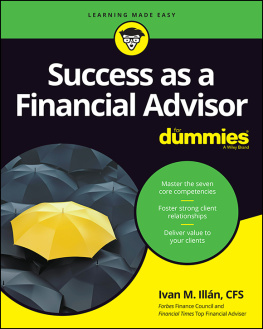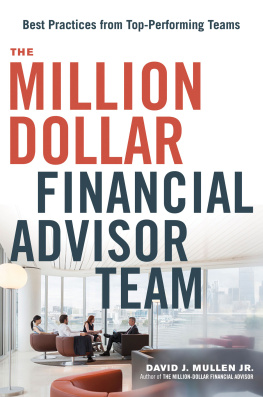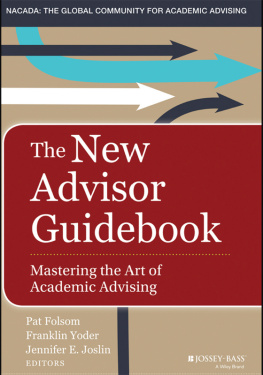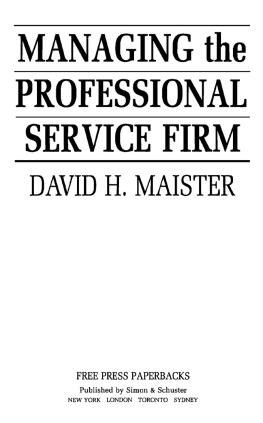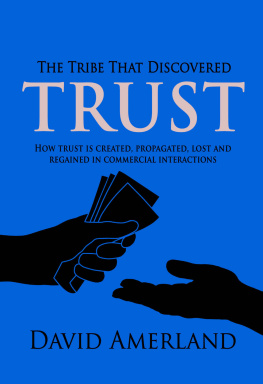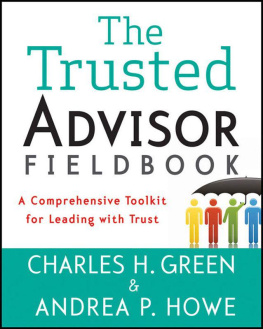A Division of Simon & Schuster, Inc.
1230 Avenue of the Americas
New York, NY 10020
www.SimonandSchuster.com
Copyright 2000 by David H. Maister, Charles H. Green, and Robert M. Galford
All rights reserved, including the right of reproduction in whole or in part in any form.
THE FREE PRESS and colophon are trademarks of Simon & Schuster Inc.
To Kathy,
Rene, Ashley, and Marshall,
Susan, Katy, and Luke
CONTENTS
What would be the benefits if your clients trusted you more?
What are the primary characteristics of a trusted advisor?
What do great trusted advisors all seem to do?
What are the dynamics of trusting and being trusted?
How do you ensure your advice is listened to?
What are the principles of building strong relationships?
What attitudes must you have to be effective?
Do you really have to care for those you advise?
What are the four key components that determine the extent of trust?
What are the five stages of trust-building?
How do you get clients to initiate discussions with you?
How can you improve your listening skills?
How can you help clients look at their issues in a fresh way?
How can you help clients clarify what theyre really after?
How do you ensure clients are willing to do what it takes to solve heir problems?
Why are truly trust-based relationships so scarce?
How do you deal with clients of differing types?
What can we learn from an unorthodox winner?
How do you create trust at the outset of a relationship?
How can you conduct your assignment in a way that adds to trust?
How can you build trust when youre not working on an assignment?
Why is cross-selling so hard, and what can be done about it?
What are the key things you should do first?
A comprehensive summary and list of concepts, insights, tips, and tactics.
INTRODUCTION
W E WROTE THIS BOOK because, in the course of our careers as consultants, and as advisors to other professionals (some fifty years of experience among the three of us), we have made every mistake we describe in the book and broken every piece of advice it contains. Whatever wisdom this book contains has been learned the hard way.
Our formal education served us well, but nothing in it prepared us for the real world of trying to serve clients effectively. Along the way, we learned that becoming a good advisor takes more than having good advice to offer. There are additional skills involved, ones that no one ever teaches you, that are critical to your success.
Most important, we learned that you dont get the chance to employ advisory skills until you can get someone to trust you enough to share their problems with you. No one ever taught us how to do that either. Yet we had to learn it. Somehow.
For many years, Rob Galford and Charlie Green have been conducting workshops, seminars, and training programs for some of the worlds most prominent professional firms, under the title of The Trusted Advisor. Meanwhile, David Maister was consulting and writing about professionalism, advice giving, client relationships, and other related topics. We met when we found ourselves presenting at the same conference and realized that, separately, we each had a piece of the puzzle. Together, we think we have a total picture to present.
The theme of this book is that the key to professional success is not just technical mastery of ones discipline (which is, of course, essential), but also the ability to work with clients in such a way as to earn their trust and gain their confidence.
We therefore address this book to both would-be advisors and to existing advisors who seek to create trust in their business relationships. We have written it mostly for individuals working in the advisory professions: consulting, accounting, law, engineering, public relations, executive search, insurance brokerage, investment banking, and similar activities. We have written it that way because that is the world we know.
However, we hope that professionals working inside corporations and other organizations, who also have clients and projects, will find this book relevant to their work.
Trust takes place between two individuals. It can, of course, take place inside organizations, within teams, and in other group settings, but we have chosen in this book to focus on the primary aspect of trust, that which occurs between two individuals, an advisor serving a client.



